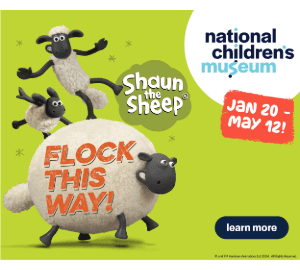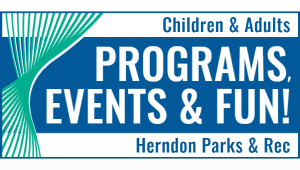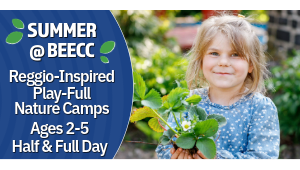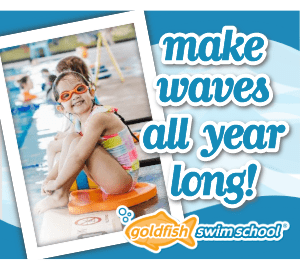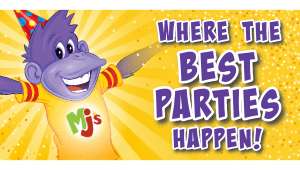By DullesMoms, Apr 2023
Mindfulness is a practice rooted in ancient meditation traditions, but has gained considerable attention in contemporary psychology and education for its benefits on mental well-being.
Often confused with yoga or meditation, Mindfulness involves paying attention to the present moment with an open, non-judgmental attitude. This means observing thoughts, feelings, and sensations as they arise without trying to change them or react to them.
• Benefits
• Teaching & Encouraging Mindfulness
• Examples
By incorporating Mindfulness into a child’s routine, parents can help lay the foundation for a lifetime of mental well-being and resilience.
Benefits for Young Children
Research has shown that mindfulness practices can offer a range of benefits for young children.
Improved Attention & Concentration
Mindfulness helps in training the brain to focus on the present moment, which can enhance a child’s attention span and concentration levels.
Emotional Regulation
Practicing Mindfulness can help children become more aware of their emotions and learn how to manage them effectively. This is crucial for developing emotional intelligence and resilience.
Reduced Stress & Anxiety
Mindfulness has been shown to reduce symptoms of stress and anxiety in children, promoting a sense of calm and relaxation.
Enhanced Social Skills
Through Mindfulness, children can develop better empathy and understanding towards others, improving social interactions and relationships.
How Parents Can Teach & Encourage Mindfulness
Teaching and encouraging Mindfulness in children is a powerful way for parents to foster a sense of calm, focus, and emotional balance.
Practice Together
Engage in simple mindfulness exercises with your child, such as deep breathing, observing nature, or mindful eating. Make it a shared activity to encourage participation.
Use Age-Appropriate Language
Explain Mindfulness in terms that are easy for a child to understand. You might describe it as “paying full attention to something” or “noticing what is happening right now.”
Start Small
Begin with short sessions of 1-2 minutes and gradually increase the time as your child becomes more comfortable with the practice.
Incorporate Mindfulness into Daily Routines
Make Mindfulness a part of everyday activities. For example, practice mindful breathing during car rides or pay full attention to the sensations while brushing your teeth.
Be Patient & Consistent
Developing Mindfulness takes time, so be patient with your child and encourage regular practice.
Lead By Example
Children learn by observing the adults around them. Practice Mindfulness yourself and demonstrate its value through your actions and behavior.
Use Mindfulness Apps or Books
Numerous resources are available designed to teach Mindfulness to children through engaging activities and stories.
Make it Fun
Turn mindfulness exercises into games or fun activities to keep your child engaged and interested.
Encourage Open Communication
Talk to your child about their mindfulness practice, ask about their experience, and discuss how it might be helpful in different situations.
Provide Positive Reinforcement
Praise your child for their mindfulness practice and highlight the positive effects it has on their mood or behavior.
Examples of Mindfulness for Children
While Mindfulness benefits all ages, what works for you might not work for your child. Like the examples below, it’s important to choose practices tailored to kids.
Mindful Breathing
Children can practice taking deep, slow breaths paying attention to the sensation of air moving in and out of their bodies. They might place a hand on their stomach to feel it rise and fall with each breath. This practice helps them calm their minds and bodies.
Mindful Listening
Kids can engage in exercises that involve listening carefully to the sounds around them, whether it’s the sound of birds chirping outside, the hum of a refrigerator, or the sound of their own breathing. This helps enhance their auditory awareness and focus.
Body Scan
Children can practice Mindfulness through a body scan, where they pay attention to each part of their body, one at a time, noticing any sensations they feel. This practice helps them develop bodily awareness and relaxation.
Mindful Eating
Kids can engage in mindful eating by paying close attention to the taste, texture, and smell of their food, eating slowly, and savoring each bite. This practice encourages them to enjoy their food more fully and may help promote healthy eating habits.
Mindful Coloring
Engaging in coloring activities with Mindfulness, paying attention to the colors they choose and the sensations of the coloring utensils on the paper, can be a calming activity that fosters focus and creativity.
Gratitude Journaling
Encouraging children to keep a gratitude journal, where they write down things they are thankful for daily, helps cultivate a positive mindset and appreciation for the good things in their lives.
Mindful Walking
Kids can practice mindful walking, paying attention to each step, the sensation of their feet touching the ground, and the movement of their legs. This can be done in a quiet space indoors or outside in nature.
Mindfulness Bell
A mindfulness bell or chime can be used to signal a moment of silence and attention. When the bell rings, children can practice being silent and focusing on their breath for a few moments, helping them reset and calm their minds.
Mindful Observation
Children can choose an object, such as a flower or a toy, and spend a few minutes observing it closely, noticing its colors, shapes, and textures. This practice enhances their attention to detail and concentration.
Guided Relaxation
Engaging in guided relaxation exercises, perhaps led by a teacher or a mindfulness app, can help children relax their bodies and minds, reducing stress and promoting a sense of well-being.
These practices can be tailored to suit the age and developmental stage of the child and offer a variety of ways for children to engage with Mindfulness in their everyday lives.
Who Are the Experts?
They include the Hawn Foundation (MindUP Curriculum), Susan Kaiser Greenland (The Mindful Child), and the National Center for Complementary and Integrative Health (Meditation & Mindfulness: What You Need To Know).
Please note, this content is not intended to be a substitute for professional medical advice, diagnosis, or treatment.



